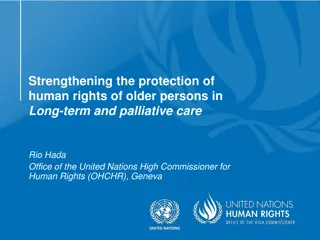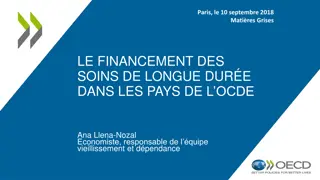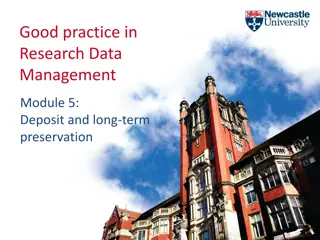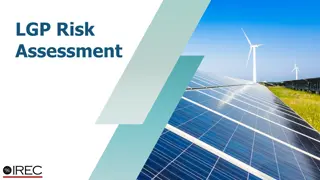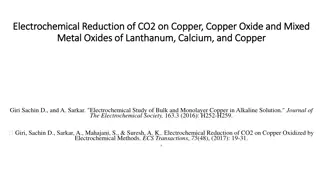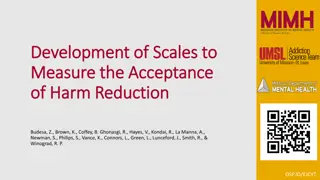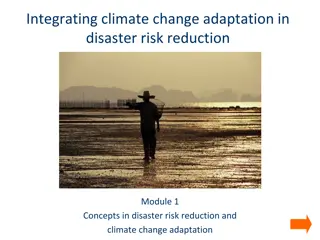Understanding Long-Term Reduction Risk in LGP Risk Management Options
In LGP risk management options, long-term reduction risk is a key concern due to factors such as load reductions, permanent grid modifications, and future grid expansion. Utilities must consider the potential impact on both customers and ratepayers, with uncertainties around grid upgrades and cost implications. The discussion revolves around balancing responsibilities and risks between customers and ratepayers, highlighting the complexity of determining cost caps and ensuring fair risk allocation.
Download Presentation

Please find below an Image/Link to download the presentation.
The content on the website is provided AS IS for your information and personal use only. It may not be sold, licensed, or shared on other websites without obtaining consent from the author. Download presentation by click this link. If you encounter any issues during the download, it is possible that the publisher has removed the file from their server.
E N D
Presentation Transcript
LGP Risk Managemen t Options
2 What is the Long Term Reduction Risk? In the previous workshop the utilities identified two categories of reductions: temporary and long term. The long term risks included: load reductions (from either customers changing or install of non-export systems) Permanent grid modification Future expansion of the grid In IREC s view, neither of the latter two conditions appear to be uniquely aggravated by a limited generation profile. Risk of long term reduction is the primary sticking point.
3 What is the Long Term Reduction Risk? IOUs presented that reductions in load profiles are the most impactful grid condition and could result in reductions to the minimum ICA-SG The risks (either from exceeding voltage, voltage flicker or thermal limits) could result in the need for either minor or major grid upgrades No data has been provided to characterize the likelihood this would occur OR the potential costs that could be incurred if it did arise. However, the IOUs have indicated they expect it to be unlikely. Applicants have little, if any, ability to know whether the conditions requiring an upgrade could be triggered prior to applying because the conditions are entirely dependent on the actions of other customers.
4 What is the Long Term Reduction Risk? If the conditions arose where a minor upgrade was required, the IOUs have indicated they (aka the ratepayers) may be willing to absorb the costs of mitigating that risk. If major upgrades are required, however, the IOUs position is that the LGP customer would have to absorb the risk, either by curtailing down to the minimum ICA-SG for some unspecified period (potentially permanently) or paying the upgrade costs (which are unknowable in advance). Under this scenario, the LGP customer s risk is only limited by what the minimum ICA-SG is. It seems unlikely, based upon current economics, that a customer will choose to build an LGP project where there is potential for 100% of the value to be eliminated.
5 Cost Cap Pros This would enable a project to more clearly evaluate the risk Would effectively be a cost share between customers and ratepayers, with the customers being first responsible for costs, but ratepayers bearing the risk for any overage Cons Would be difficult to decide on a cap amount that would work for a range of project types and ICA capacity differentials Lacking data to inform total ratepayer risk under this scenario Current IREC conclusion: arriving at a rational cap for both customers and ratepayers is not likely with the data available (if ever).
6 NEW: Limit LGP to lower risk feeders for initial test period It may be possible to identify feeders where the risk of reductions in load triggering a voltage, flicker or thermal upgrade are more likely (even if unlikely overall). For example, where a feeder has a significant amount of load from one customer, the risks might be higher. Would like to discuss if this or other criteria could be used to identify the feeders where there is a greater risk of load reductions that would necessitate an upgrade. The IOUs have already identified feeders that meet a significance threshold established by the 15/15 rule and that could be a starting point for a test period.
7 NEW: Limit LGP to lower risk feeders for initial test period Concept: For initial test period, exclude LGP from highest risk feeders Do robust data collection during test period (see next slides) Ratepayers would bear risk of upgrades during test period, but would have higher confidence of reduced risks. Challenges: Not really related to the unique, theoretical, LGP risks Need to determine high risk feeders with limited data
8 Data Needs to Inform Present Decision Historic load reductions by feeder? Is there a way to target this to identify feeders where load reductions occurred not from exporting (i.e. NEM) DERs? Better data on what the potential upgrade costs could be should they arise? Data on forecasted load growth and how it is expected to vary by feeder Other?
9 Data Needs to Evaluate Test Period Detail data on overall load fluctuations across system Detailed data on system conditions on feeders after LGP systems are installed Data on forecasted load growth If a safety or reliability issue emerges on any feeder, detailed data on cause and mitigations taken Other?
10 Examining Actual ICA Load Curves IREC is using 2021 ICA data to example sample ICA (aka LGP) curves on both a 24 hour and 12 month basis across each IOU s system IREC hopes to be able to share and discuss the data at the next workshop or sooner to inform discussions about the granularity of the profiles.







